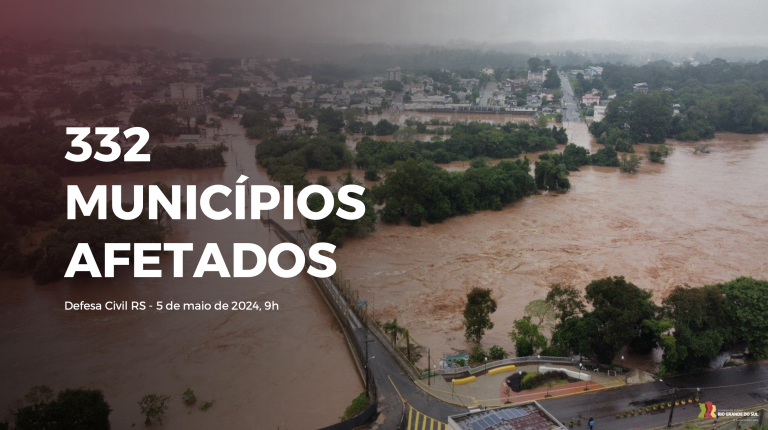El Niño-linked rains trigger devastation in Brazil
Record rainfall linked to El Niño has caused unprecedented flooding in the southern Brazilian state of Rio Grande do Sul, with a growing number of casualties and infrastructure and economic losses. There is no immediate respite in sight.

According to the Civil Defense of Rio Grande do Sul, 78 people have been confirmed dead, 105 others are still missing and 175 have been injured. Nearly 19,000 people have been made homeless, almost 116,000 displaced, and nearly 850,000 affected across 341 municipalities.
National authorities have rescued 1,000 people through rescue and emergency operations, as reported by the Civil Defense of Rio Grande do Sul. Brazilian President Lula da Silva toured the worst affected regions and announced a package of emergency measures to help victims.
Images from the Rio Grande do Sul government showed the huge extent of the flooding. The airport in the state capital Porto Alegre was closed. Industry was paralysed. Transport links and energy and water supplies were cut and 110 hospitals were affected.
The European Union’s Copernicus Emergency Management Service (EMSR720) was activated in rapid mapping mode on 3 May to provide flood extent and damage assessment.
The disaster in Brazil – and ongoing flooding in East Africa - highlight the need for a more integrated response to El Niño and climate change impacts and Early Warnings For All, as called for by WMO at a special United Nations thematic event on 1 May.
Brazil’s national meteorological and hydrological service, INMET, issued another red alert for storms on 6 May, with moderate to localized heavy rainfall and thunderstorms and a very high high hydrological risk. The conditions are also affecting northern Uruguay.
Much of Rio Grande do Sul has been hit by persistent, heavy rainfall since 27 April, according to INMET. In some regions, especially in the broad central valleys, plateau, mountain slopes and metropolitan areas, rainfall volumes have exceeded 300 millimetres (mm) in less than a week. In the municipality of Bento Gonçalves, for example, the volume reached 543.4 mm.
Porto Alegre received 258.6 mm of rainfall in just three days. This figure corresponds to more than two months of rain when compared to the Climatological Normal for April (114.4 mm) and May (112.8 mm).
The period between the end of April and the beginning of May 2024 is still influenced by El Niño. The phenomenon, responsible for warming the waters of the Pacific, helped block cold fronts and concentrate the systems of areas of instability over Rio Grande do Sul.
In addition to this condition, the much higher temperature of the South Atlantic Ocean, close to the equatorial belt, also contributes to the humidity, intensifying the rainfall. The transport of humidity from the Amazon and the thermal contrast with warmer air to the north of the Southern Region, as well as colder air to the south of Rio Grande do Sul, also helped to strengthen the storms, said INMET.
The WMO State of the Climate in Latin America and the Caribbean 2023, to be released on 8 May, will examine El Niño and climate change impacts on the region in the past year. This was also high on the agenda of meetings between WMO Secretary-General Celeste Saulo and government leaders in Chile from 1-2 May.
Flooding disaster photos, facts and figures from Rio Grande do Sul government.pdf









